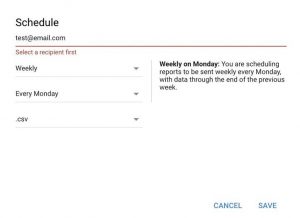When you are working towards improving your sales team’s productivity, it will get technical at some point. We’re talking about servers and ports, and whether it’s better to have your data on-site or to use the cloud. And, this is just the tip of the iceberg.
Knowing all about these technicalities, especially when it comes to your CTI server, will help you mold the system that supports your team. So, read up and let’s get technical!
First, What is CTI?
As we mentioned in a recent blog, CTI (computer telephony integration) or integrated calling is the meeting of your phone and computer systems. CTI is where these seemingly separate systems interact in order to streamline your company’s communications.
This can result in faster call handling and problem resolution, a more responsive and accessible sales force, and – of course – increased productivity, revenue and profit.
Computer telephony integration enables:
- Skills-based routing
- Phone flexibility
- Caller authentification
- Call data recording
- Automated screen pop-up system
- Call monitoring
- Automated dialing
When configured correctly and tailor-fit to your needs, CTI can make a huge positive difference on the efficiency and effectiveness of your sales team.
What Does a CTI Server Do?
The backbone of your CTI system is the CTI server. Your server is crucial to your operation as this is where everything – your operating system, computer telephony integration applications and sometimes even your IP PBX – actually runs. Often, your computer interface, local applications and the like are mere conduits. Most of your data will be saved in your CTI server.
Given such a heavy task list for the CTI server, it follows that you should choose one (or more) that is robust, secure and industrial-grade. It should have a voice port interface to support both analog and digital calls. It should be powerful enough to support a slew of related applications, such as chat and IVR.
What Are the Different CTI Server Structures?
Ready for your first CTI server? Hold on, not just yet!
First, we need to determine the best CTI server structure for your business. There are two main set-ups to choose from.
First Party Telephony: This is alternately called Desktop CTI. It simply means that the computer that you use is the CTI server. All data and applications are in that same computer.
This is a typical set-up for single office businesses where one or two people do sales and marketing. It is a good way to get started. You can expect a company like this to expand fast as it is implementing systems that help with productivity and communications.
Third Party Telephony: This is alternately called System CTI. Here, the central CTI server is connected to the IP PBX. All devices that use the server and phone system are connected via local network (LAN). This is a complex set-up that requires the intervention of IT or Network Administrators, but it is more flexible and is a better fit for growing companies.
At this stage, you need to make further choices.
Where are you going to host your system CTI server?
Is it going to be cloud hosted in a remote data center through a third part hosting company?
Do you want your server on-site?
On-site or the Cloud?
There are different initial and ongoing investments associated with the set-up that you choose for your CTI server. Consider these pros and cons before anything else.
On-site CTI Server: This is arguably the best CTI server set-up for big companies, those with massive departments and satellite offices. Having your servers on-site ensures better security, control and customization. You get a CTI set-up that is tailor-fit to your complex requirements.
The downside of this set-up is that you need to put in a large initial investment on servers, network facilities, operating systems, applications and staff training. You can also expect on-going maintenance investments.
Plus, you have to think ahead. How soon do you expect your integrated calling requirements to expand because of additional manpower, office locations and the like? You need to estimate your CTI server’s capacity requirements five years into the future.
Cloud-hosted CTI Server: “In the cloud, this does not matter anymore as these considerations are not necessary because SMEs can seamlessly scale resources, ordering the exact amount of computing power and storage space that is needed for the task at hand.” – Alexander Vierschrodt, Ccommercial Management VPS and Cloud Head at 1&1 Internet.
This statement is perhaps the best description when it comes to using the cloud for your CTI server. The set-up is easy; you can start right away with exactly what you need. You have a dedicated team of experts taking care of your server. Plus, you can expand as needed. There is no huge upfront, and you won’t be surprised when your monthly hosting bill comes in.
In fact, many tech experts praise cloud hosting as having a huge impact on how SMEs conduct their business and manage their data. They can now take advantage of productivity suites that once were only available to big businesses, in increments they can afford.
This is the same when it comes to your cloud-hosted CTI server. You can set specific capacities, applications and ports to start with. Then, once you grow, you can just expand as needed. There is not much future-looking investments required.
The one concern that hinders widespread adoption of cloud hosting is security. Just imagine your precious customer data in the cloud, as well as your team’s personal information, correspondences, contracts and the like. It can send jitters down anyone’s spine.
And while cloud hosting service providers have pumped up their security steadily, their customers are making a slightly divergent move. Businesses like yours that use the cloud are opting to adopt a hybrid set-up.
The hybrid set-up is somewhat a mix of cloud and on-site CTI server hosting. Here, a separate on-site server is used to manage and secure data. The network-attached storage (NAS) server secures your information on-site while allowing you to take advantage of the scalability and power of cloud-hosted servers.
What Are the Qualities to Look for in a CTI Server?
As we said earlier, your CTI server has to be robust, secure and industrial grade. It needs to support digital and analog voice, as well as the many applications that you will run.
Operating system
CTI server brands, such as CISCO, usually offer proprietary operating systems for their servers. In some set-ups, Windows Server OS is used.
Whatever the case, the key qualities to watch out for are your operating system’s stability and compatibility.
You need server stability to guarantee consistent quality performance, especially during heavy call traffic. Remember too that you will be running applications, alongside your CTI system. You need to ensure that your operating system can work with your requisite applications.
Supported ports
There are typically no limits to the IVR ports you can set up per server. However, you need to consider the overall performance of your CTI system. Having too many ports per server can slow down its performance. The maximum number should be 36 for primary CTI servers. Other connected servers can have up to 48 ports.
Power supply and RAID (redundant array of independent disks)
Since stability and access are requisite, your CTI server should also be supported by alternate power supplies and a RAID system.
Your alternate source of power guarantees your 99.99% uptime, regardless of what happens to your main power source. This way, you can keep in touch with your prospects and clients as needed – and vice versa. Your RAID system is a way to protect your data and improve your server’s data processing capacity.
Processing power
Of course, you can expect your CTI server to be a workhorse of the company. Ensure that you get a server with apt processing power. This typically starts at 233 MHz.
How Do I Begin My CTI Server Set-Up?
There are many aspects to consider when you finally set up your CTI server. Here are some to get you started:
Know your needs.
So, you’re in the market for a CTI server. What do you really need it for?
This is a basic but neglected question. Sometimes, it is easier to just default to the usual specs; and reply to “what are ya havin’?” with a “the usual!”
When you’re working with a budget and have performance specifics in mind, it pays to take time to list down what you really need. There are options out there for an optimal number of users – but, do you really need that much? How many calls per day are you expecting? How many simultaneous calls do you often receive? Who will be using your integrated calling system?
Look around online for your options, based on your stated needs. And, then see if they have a local distributor who can demo their product for you.
Buy the affordable CTI server, not the cheapest one.
Thomas Jeffs, Lucidica founder, said: “A ‘cheap server’ is something that will cost your business a whole lot more than the initial price tag.”
This is true – you get what you pay for. So, it is important to take time to shop around. There are several vendors out there and they are competing for your business! You can have the best deal for your budget as long as you stick with the search.
Choose the right OS.
As we mentioned earlier, your CTI server operating system has to be stable and compatible. A robust server means that you can serve sessions and data requests promptly.
Support and maintenance
Like all technologies, your CTI server will support and maintenance services. Your server and OS provider can only provide this up to some point. Expect the need to train your own staff or to commission external help in the future.
Source:
How to Choose the Right Server For Your Business
http://www.techradar.com/how-to/computing/servers/how-to-choose-the-right-server-for-your-business-1092468
(180)









